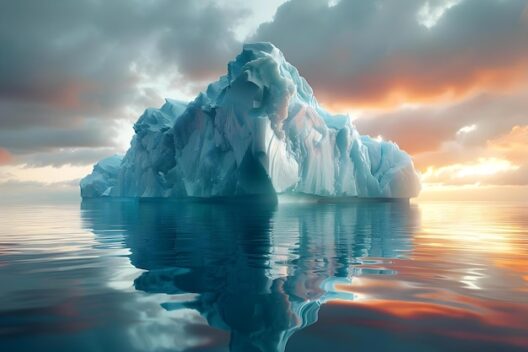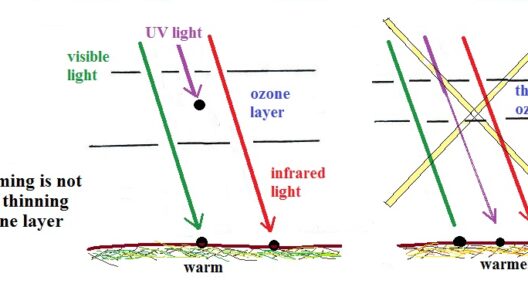The Greenhouse Effect: A Deep Dive into CO2’s Role
The Earth, often revered as a vibrant blue gem suspended in the cosmos, is equipped with an intricate system that sustains life. This system, however, is perpetually at risk, primarily due to the very essence of our industrious existence: carbon dioxide (CO2). To comprehend the depth of this predicament, one must delve into the greenhouse effect—a phenomenon that morphs the Earth’s atmosphere into a greenhouse, trapping heat much like a blanket enveloping a sleeping body on a frigid night.
At its core, the greenhouse effect is an essential and natural process. Solar radiation streams in from the Sun, warming the Earth’s surface. This energy, after transforming into infrared radiation, ventures back into space. However, greenhouse gases, including CO2, act as a barricade, ensnaring some of this heat within our atmosphere. This process is analogous to wrapping a thermal blanket around a pot of water, which eventually leads to a boiling state. In absence of this mechanism, our planet would be inhospitable—devoid of the moderate temperatures necessary for life. Yet, there lies a cautionary tale within this comfort.
The burgeoning concentration of CO2—a byproduct of human activities—has led to an unprecedented enhancement of the greenhouse effect. Herein lies the crux of the matter. As industrialization took off, with the combustion of fossil fuels and deforestation taking center stage, a dramatic rupture in the delicate balance of greenhouse gases ensued. The proverbial pot simmers and eventually spills over, catalyzing a plethora of climatic aberrations that manifest as global warming.
CO2 is often dubbed the “king of greenhouse gases” owing to its substantial contribution to the greenhouse effect. Unlike other gases, such as methane or nitrous oxide which may have a higher individual heat-trapping capability, CO2 has a longer atmospheric lifespan. It is persistent, lingering in the atmosphere for centuries after its release. This resilience transforms it into a formidable adversary in the battle against climate change.
Entering the arena of this intricate atmospheric ballet, we encounter the carbon cycle—an elaborate dance depicting the lifecycle of CO2. Carbon, though boundless in its versatility, traverses through various forms and reservoirs: the atmosphere, oceans, terrestrial ecosystems, and sedimentary deposits. Plants, for instance, play a poignantly vital role. Through the process of photosynthesis, they sequester CO2, converting it into oxygen and organic matter. However, deforestation depletes this capacity, exacerbating atmospheric CO2 concentrations. It is an intricate interdependence; we depend on forests for life, yet we exploit them at an alarming rate.
As CO2 levels rise, several emergent phenomena herald catastrophic consequences. One unmistakable manifestation is the acidification of oceans. The oceans, serving as carbon sinks, absorb an immense portion of CO2, inadvertently forming carbonic acid. This alteration in pH endangers marine life, particularly organisms with calcium carbonate structures—think coral reefs and shellfish. The death of coral reefs due to bleaching—a result of stressed ecosystems—serves as an alarming reminder of our fragile interconnection with nature.
Moreover, the warming climate intensifies weather extremes, giving rise to hurricanes, droughts, and wildfires. Each surge in temperature alters weather patterns, disrupts established ecosystems, and jeopardizes food security. With CO2 serving as a catalyst, the narrative of droughts, floods, and fires unfolds, casting shadows on harvests and livelihoods across the globe.
Yet one must also look toward the horizon, for solutions lie beneath the surface of despair. The pursuit of carbon neutrality—where net carbon emissions are reduced to zero—emerges as a shared goal. Renewable energy sources such as solar, wind, and hydropower present sustainable alternatives to fossil fuels. Embracing these sources not only diminishes CO2 emissions but also insulates us from the vicissitudes of fossil fuel markets.
In tandem, innovative technologies unfold before us. Carbon capture and sequestration (CCS) offers a beacon of hope by capturing emitted CO2 from sources such as power plants and storing it underground. This technological marvel holds the potential to curtail the flow of greenhouse gases into the atmosphere dramatically.
Furthermore, individuals arm themselves with a robust arsenal of action. Lifestyle choices such as reduced meat consumption, sustainable transportation, and energy-efficient practices augment global efforts to mitigate climate change. Collective grassroots campaigns burgeon, coalescing around the urgent need for climate justice. An informed populace, equipped with knowledge, holds the power to dictate the narratives that shape policy decisions.
The onus now rests upon humanity—the architects of this predicament—to cultivate a paradigm shift. To nurture our environment is to nurture ourselves. The greenhouse effect, while integral to life, requires recalibration to ensure equilibrium and sustainability of the planet. Every fraction of CO2 curbed, every tree planted, and every sustainable choice made paints a picture of hope against a backdrop of despair.
As we navigate towards the future, understanding the complexities of CO2’s role in the greenhouse effect must spur us into action. The vulnerabilities of our radiant blue planet lie exposed, but so too does the potential for change. The metaphorical light in the distance beckons—illuminating a path where humanity might one day coexist harmoniously with nature. Our collective future hinges on the choices we make today to redefine our relationship with the fragile web of life on Earth. A holistic approach, imbued with resilience and innovation, will ultimately determine our legacy in the annals of time.







